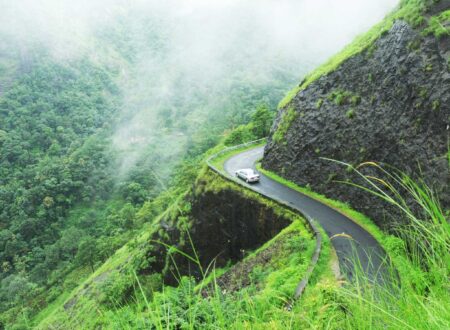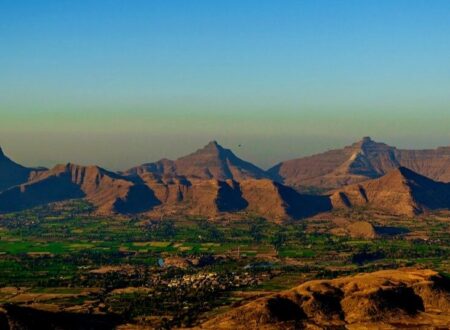Delhi never fails to mesmerize us with its iconic history. The ruins of various forts, cities, and palaces are still living in Delhi’s nooks and crannies. Tughlaqabad, a stunning ruined fort founded in 1321, is one such example. Ghiyasuddin Tughluq, the dynasty’s founder, built it. This founder constructed the Qutub-Badarpur Road to link it with the new city to the Grand Trunk Road. It is also known as Mehrauli-Badarpur Road. Such constructions remind us of the glorious past of Delhi.
The story behind the Cursed Fort
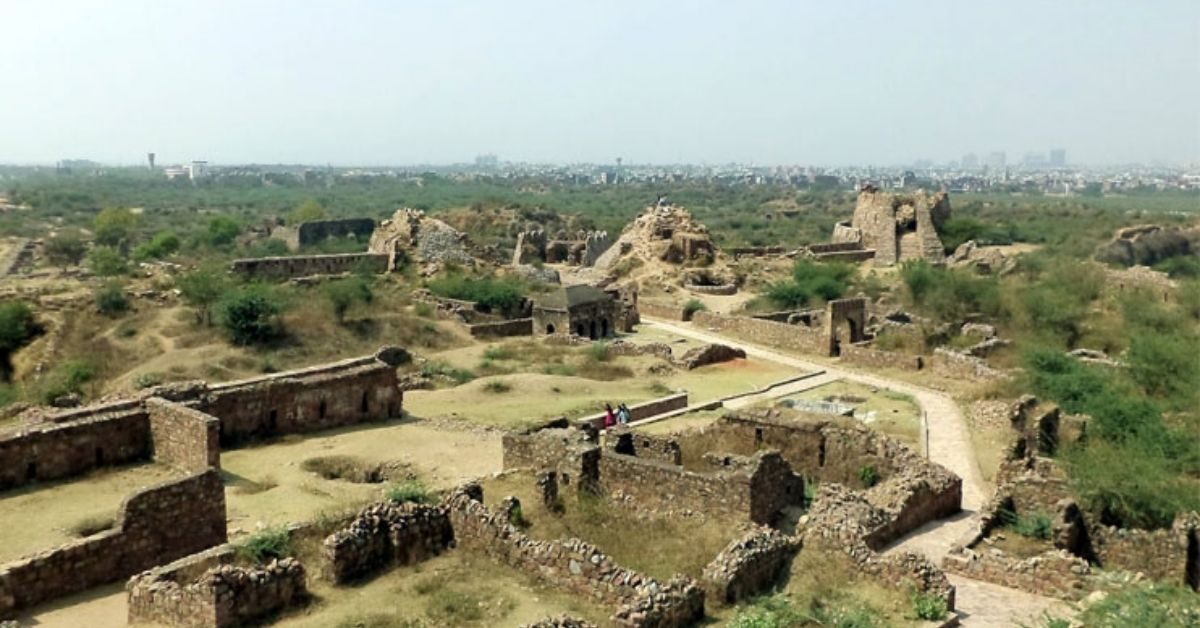
Tughlaqabad was a dream plan of Ghiyasuddin Tughlaq. He wanted to build a powerful and magnificent fortress to stand against assaults. As he sat on the throne, he ordered the workers of Delhi to compulsorily work on the construction.
However, Hazrat Nizamuddin Auliya was building a stepwell at his dwelling place. This Sufi Saint required workers hence, workers would work on the step during the night. The move of workers infuriated Tughlaq and he banned the supply of oil to Nizamuddin; this way the lamps could not be available. As a result, Sufi Saint Nizamuddin cursed Tughlaq with the words; Ya rahe ujjar ya base Gujjar (either the city with being left in ruins or be occupied by herdsmen).
Things to See at Tughlaqabad
Gateways
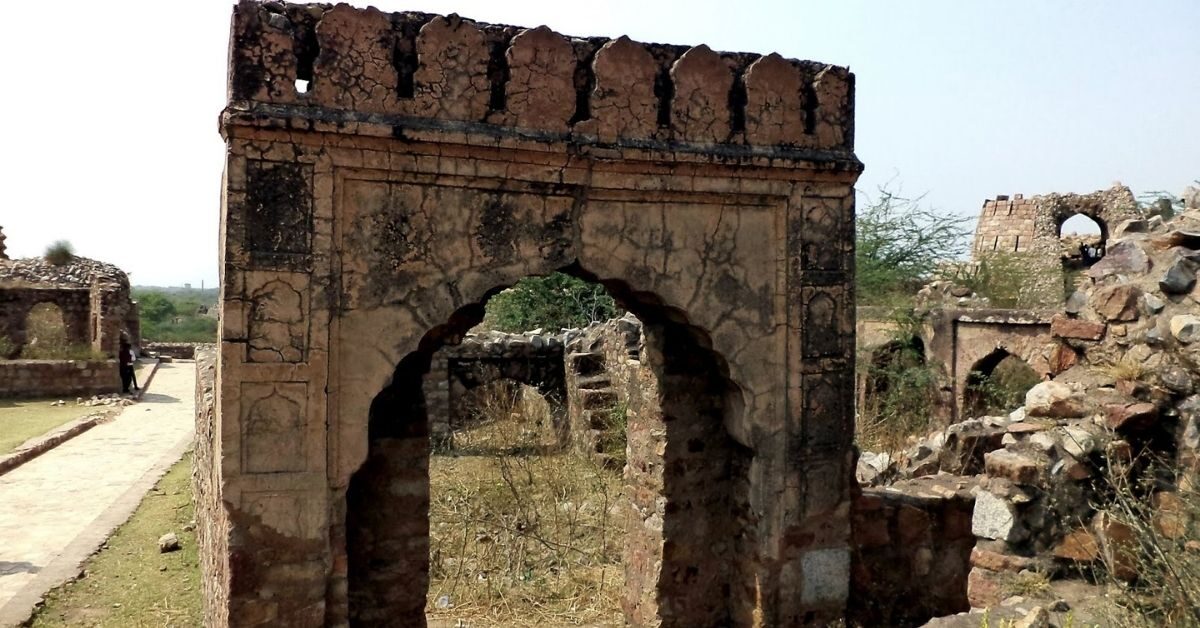
Tughlaq dynasty was marvelous during its reign. Moreover, the fort enjoyed immense power due to the political hold of Ghiyasuddin Tughlaq. Originally 52 gateways were built, 13 of which can still be seen today. The doorways are an excellent form of Islamic art and architecture. Not to mention, these entryways are still marked with battlements parapets with a height of around two-story. It clearly depicts the royalty of Tughlaqi Gharana.
Bijai-Mandal
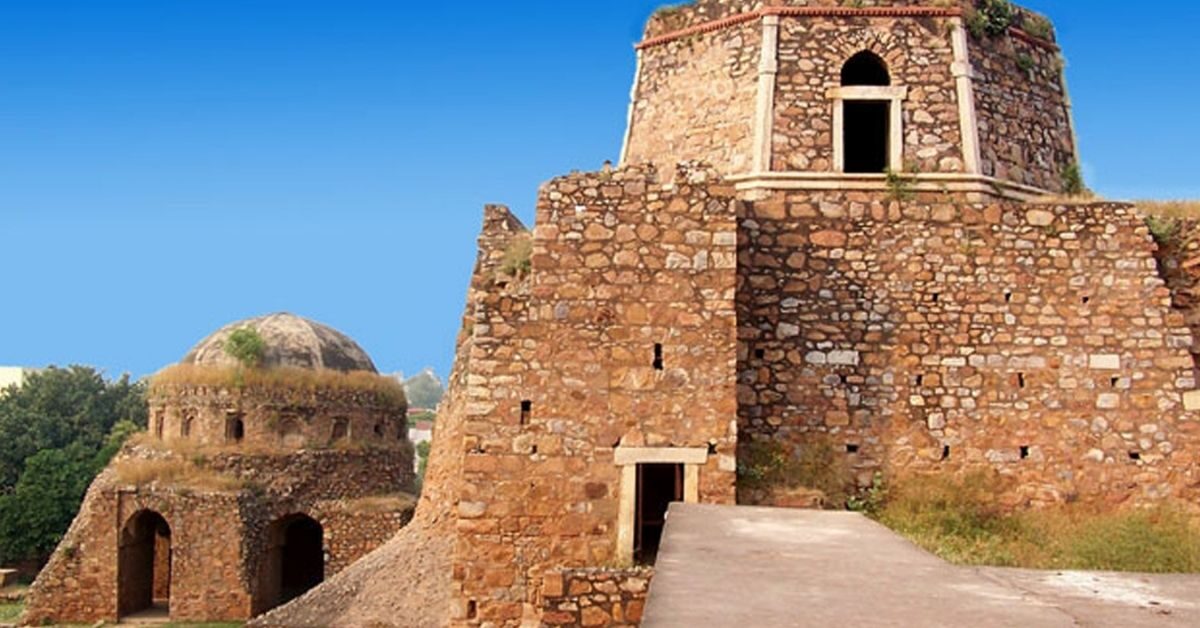
Bijai Mandal is a tower on a ridge in the city of Tughlaqabad, which connects to several halls and a palace. Additionally, you can witness a secret underground passage through the way. One of the forts of Delhi is truly an inspirational monument to witness the architectural beauty of Islamic history.
The Main Fort
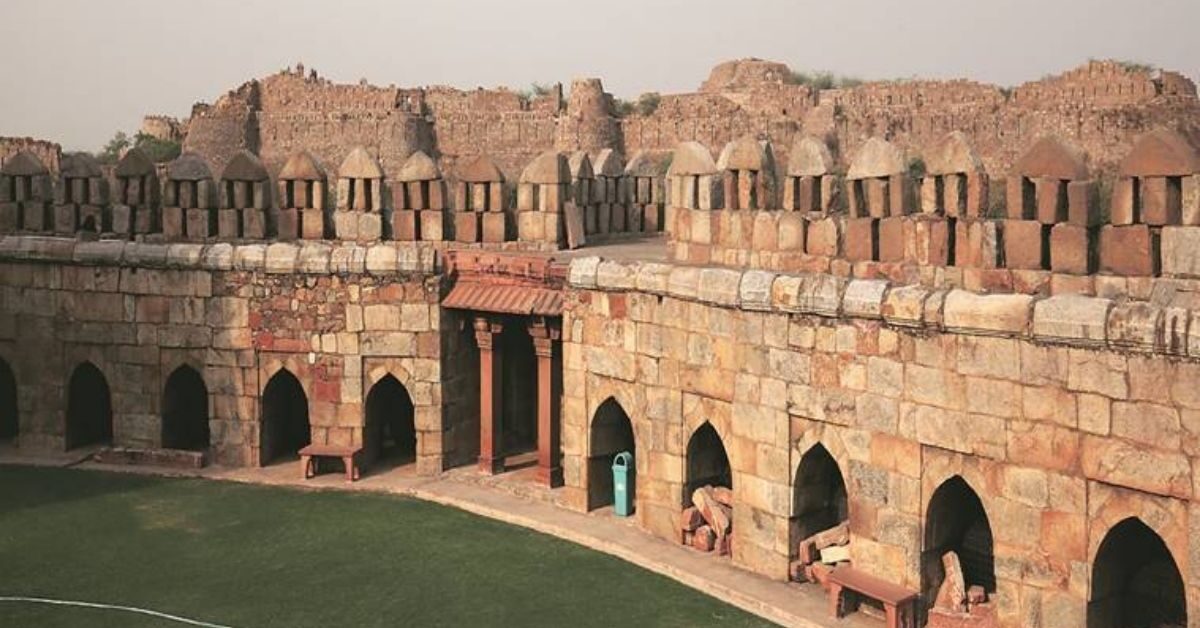
However, tourists can still witness one of the ruined forts of Delhi. This Fort is linked through a causeway to the southern part and goes up to 600 ft in height with around 27 arches. Ghiyasuddin also constructed an artificial lake leading through the construction. Not to mention, this tomb is constructed of red sandstone, with stairs leading to the main area. The mausoleum is square in shape and has a single dome on top. You can spot the elegant beauty of Islam architecture covered by fabulous white marble and slate.
Tips for Visiting Tughlaqabad
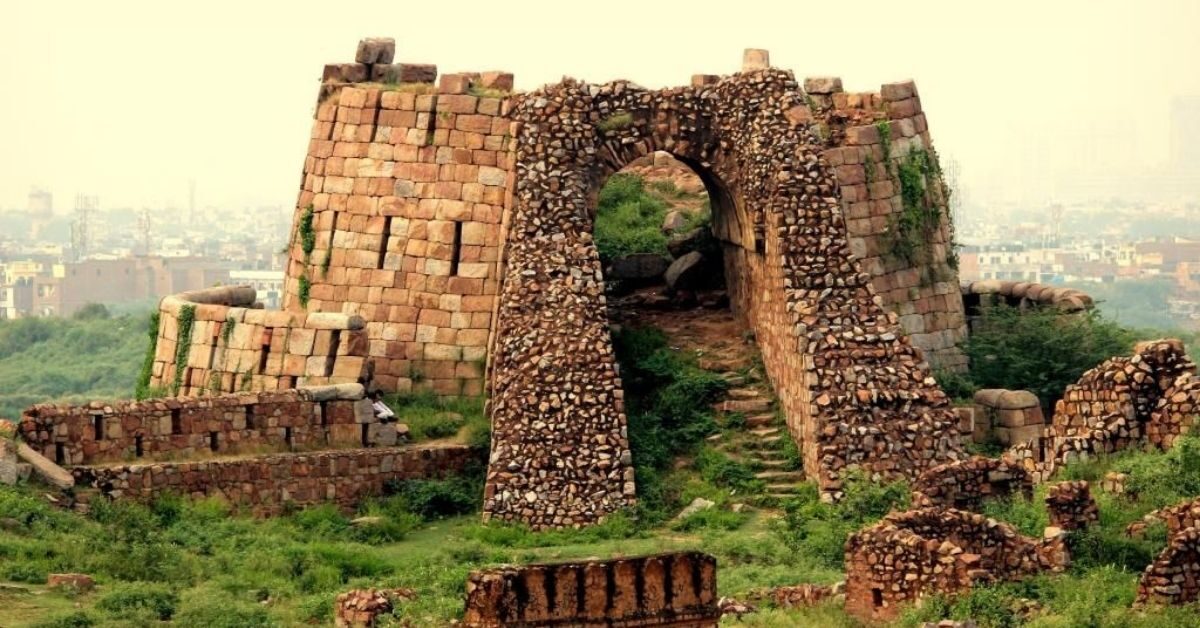
- This fortified city covers a vast area hence it is advisable to not go deeper into the unknown areas of the fort.
- You may be surrounded by thieves or wrong-doers involved in illegal activities due to the lack of human settlements around.
- Stay alert with your expensive belongings including cash, equipment and mobile phones.
- You can carry a stick for your personal safety.
- You might not find food or water while taking a tour of the fort. Carry a bottle of water and handy snacks.
Best time to Visit this Delhi Fort
The ideal time is between the months of October to April to stay away from the scorching heat of Delhi.
How to Reach Tughlaqabad Fort
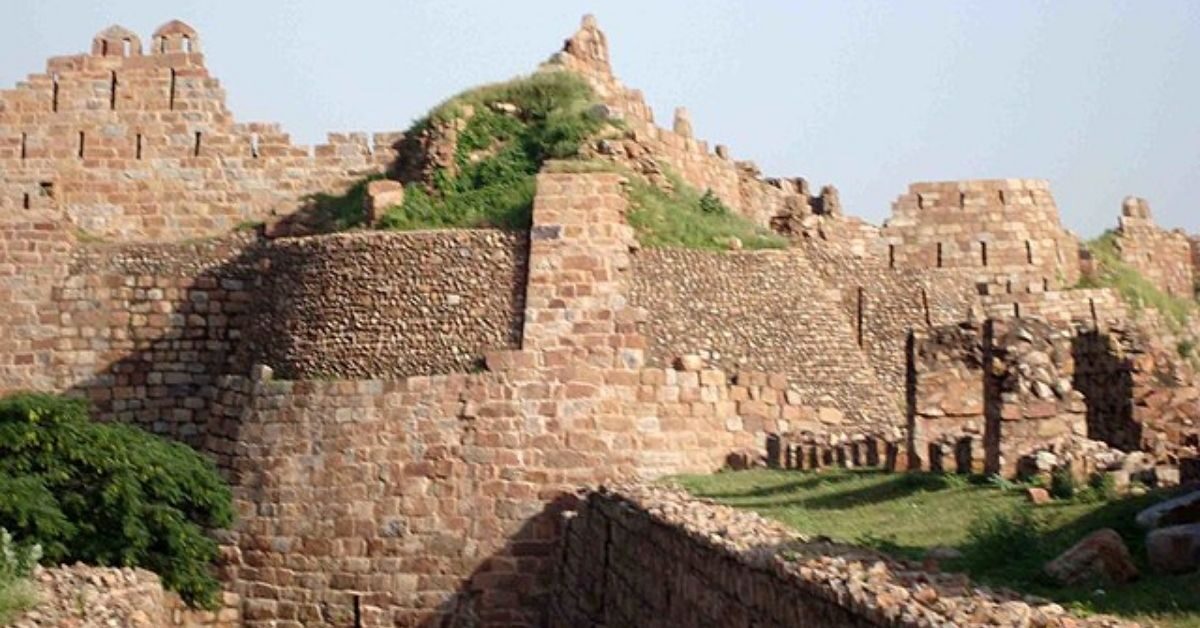
Reaching Tughlaqabad fort is super easy with various transportation options.
You can commute via buses, cabs, or auto rickshaws.
Govindpuri and Saket are the nearest metro stations from the fort.
A private car is an ideal deal if you’re concerned about safety in public transportation.
Time to explore the history geek in you while you experience the splendor of the Tughlaq dynasty!
Follow India Chalk on Instagram for more amazing travel content. You can share your travel story with us. Reach out to us on email at contact[at]ndiachalk[dot]com. This blog is curated by India Chalk and written by Riya Jogi.


